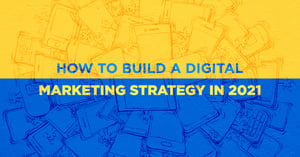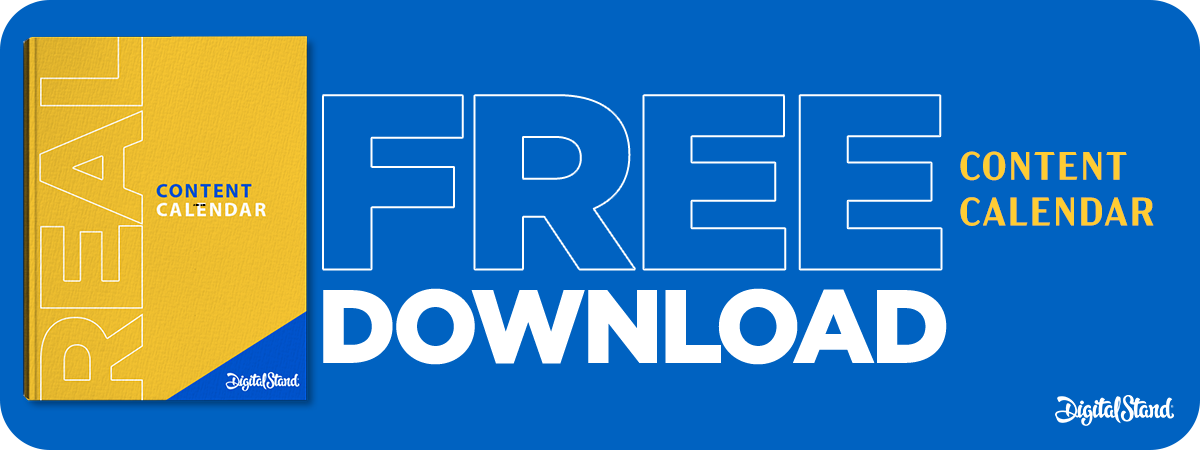How do you create a digital marketing strategy in 2022?
Should you spend more money on PPC, social media marketing, Website Design? Or should it be on Landing Pages, Customer Journey Mapping, Marketing Automation, or Messaging?
Great Question. It should be easy to work out. As you probably know, it isn't easy to work out. Unfortunately, or fortunately, "the answer" is hidden in your data.
It has never been truer than now that we're in a constant state of change.
Given this, it means our digital marketing plan and go-to-market approach should be continually assessed. We need to look for ways to optimize and improve both the process and the approach.
In short, it should be well-defined and agile.
In today's article, I will explore a social plus digital strategy because, after all, it is 2021!
The areas we are going to look at are as follows:
- Target Market
- Target Customer
- Brand Positioning
- Social and Digital Media Channels
- Message Testing
- The Buyer's journey
- A Frictionless Path
Target Market
As Peter Drucker once said, "The aim of marketing is to know and understand the customer so well the product or service fits her/him and sells itself."
To do this, we want to capture as much information as possible and practical about our audience. All social media and digital media platforms are more than willing to help us on this front.
Age: The age of our target market is one of the first factors that we want to look at. Not only do we want to understand the age of this group. We also want to understand the values, behaviours and shared beliefs that are held by this demographic.
As an example, "did you know that 66% of millennials prefer to wait for a product to go on sale before purchasing it "– Mindshare.
Knowing this as an e-commerce business, offering an abandoned cart discount to Millenials would improve conversions.
Understanding their behaviours will help you increase conversion rates.
Gender: Depending on your approach, you might want to target based on identity. There are products and services based on their offerings that suit one gender more than others.
Conversely, some products and services are non-gender specific. So your goal is to appeal more broadly in this respect.
Family Situation: Is your target market married, single, married with young children between the ages of 1 to 3, or 3 – 5 years old. Or are they retired? Based on the data, we can drill down into each of these segments and build an audience pre-defined around these criteria.
Platforms like Facebook allow us to do just that.
After all, putting the right product in front of the right person with the right need makes sense to everyone concerned.
Location: Where did they live? Australia, Sydney, Brisbane, London, or New York you can find them on social.
Potential Audience on Facebook in Australia
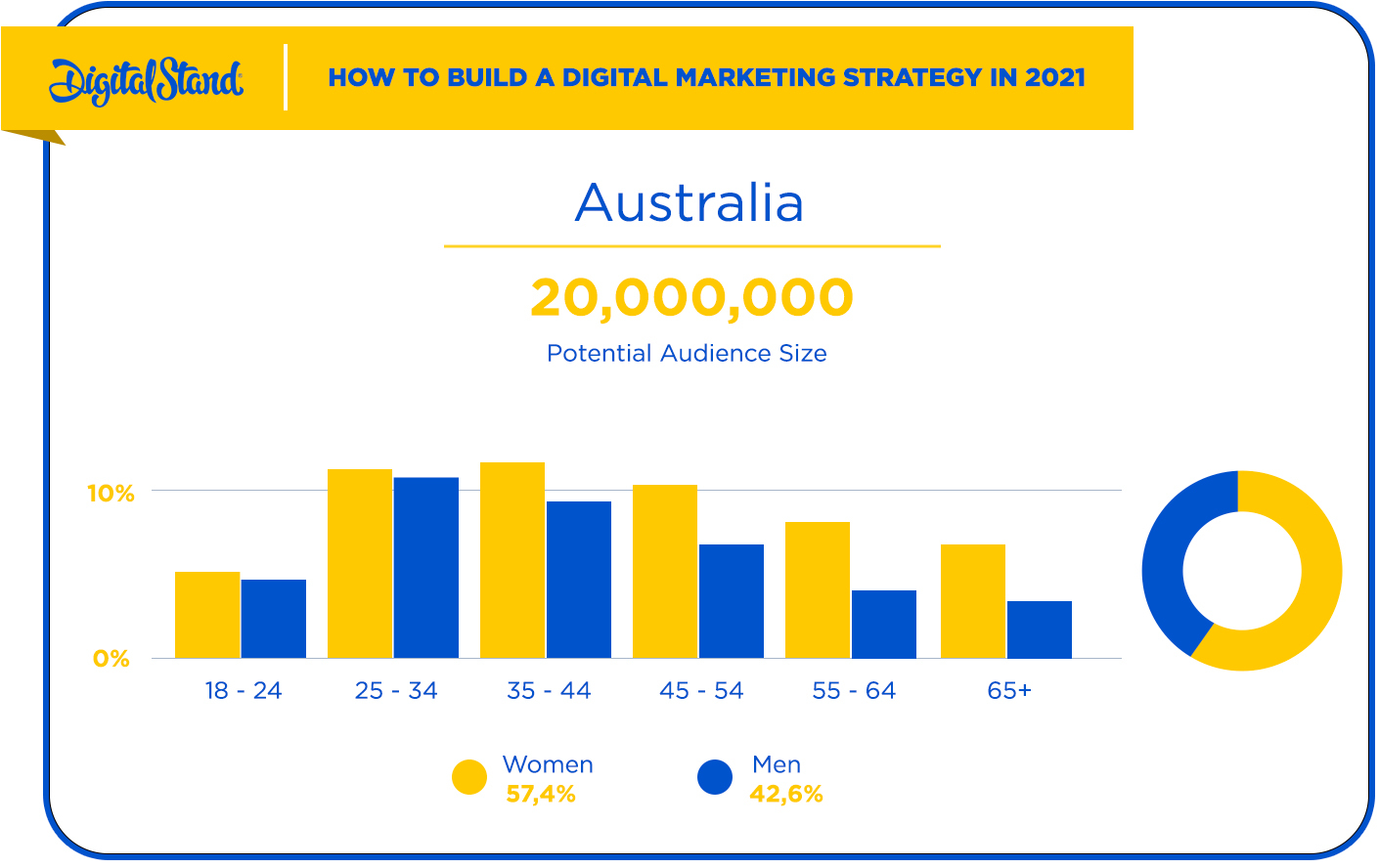
Potential Audience on Facebook in London
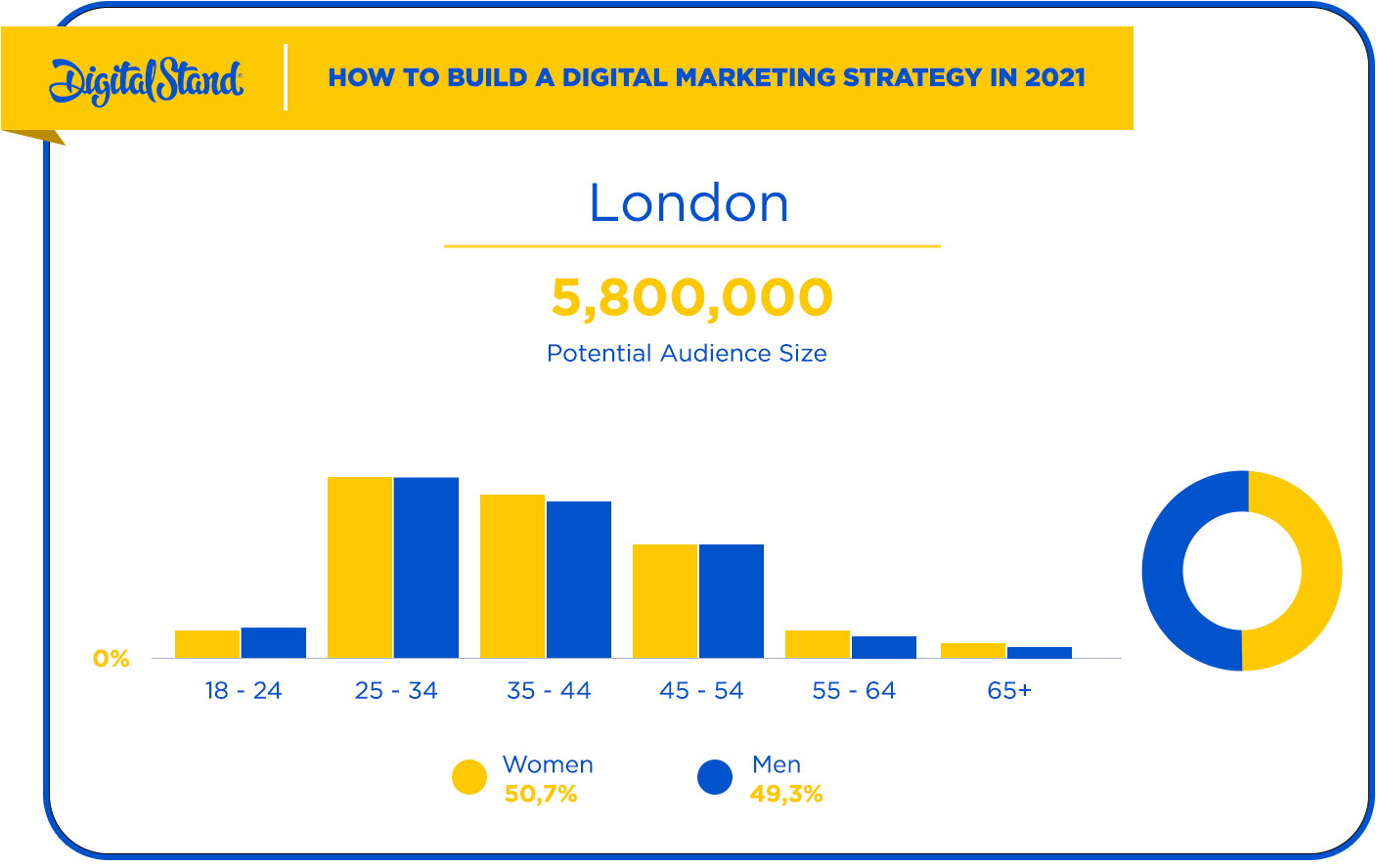
Potential Audience on Facebook in New York
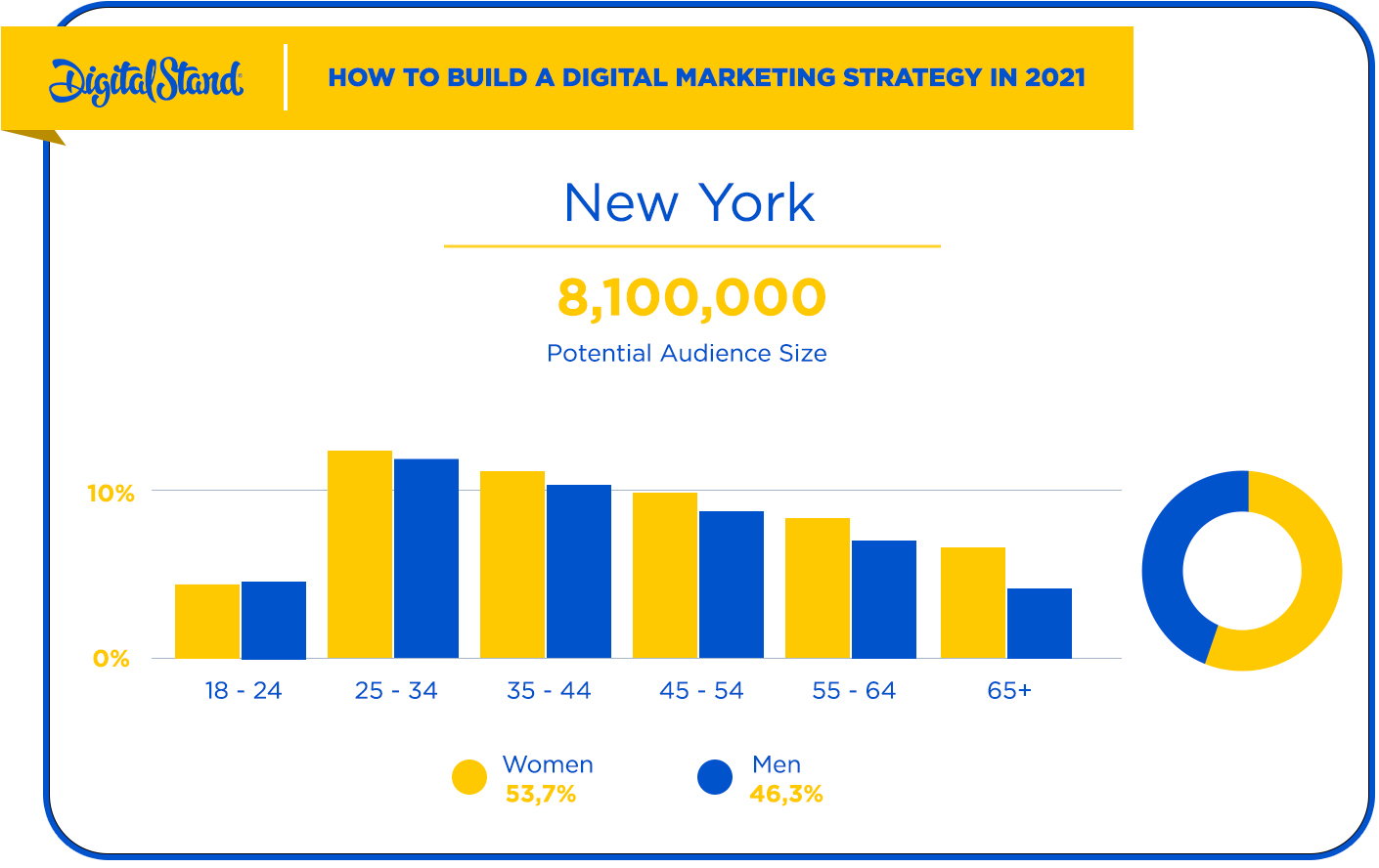
Target Customer
You might not always know this, but through modelling, you will find them.
Now I don't know if Jeff Bezos knew his ideal customer initially, but my guess is he did.
BTW; The first book sold on Amazon.com was Douglas Hofstadter's Fluid Concepts and Creative Analogies: Computer Models of the Fundamental Mechanisms of Thought.
And their first customer was John Wainwright, an Australian software engineer based in Sunnyvale, California.
But when assessing our target customer, we want to understand:
Income level: How much do they earn, and does this affect their buying criteria? A quick look at any job board will give you the exact information you're looking for in this respect.
Industry: What industry does your target market typically work in? Have they commonly held beliefs around the role that they perform or the industry sector that they work in?
Company: Do they work for the number one or two players in the market? Or are they working for a start-up looking for any competitive edge to be more efficient and faster than their competitive peers? Therefore they have certain expectations around the product or services they would use.
Educational Level: Are they well educated with university qualifications and or a master's degree. Or did they leave school in year 10 to start some form of apprenticeship and or trade?
Values and Beliefs: For example, according to a Deloitte study, "Gen Z no longer forms opinions of a company solely based on the quality of their products/services but now on their ethics, practices and social impact."
Digital behaviour: What social and digital media platforms do they use? Or have they ever known a world without the internet and social media? In the Gen Z case, the answer is no.
Summary: While depending on your area of focus, some or all of the above will be useful in modelling your ideal customer and market.
Expert tip: By combining data about your market from LinkedIn and Facebook, you have a more complete picture. And a deeper understanding of your target market and customer.
Brand Positioning
We now understand the target market and our customers, their location, their buying behaviours, and some of their values. How will we position ourselves to drive brand awareness and conversion?
Who are our competitors in the space, and how do we differentiate ourselves?
Often, when we enter a new market or are the less dominant player in an existing market, we have to find a unique way to position our brand.

Because just like Avis, if you want to stand out, you have to do something worthy of standing out.
It is now estimated that we see approximately 6 to 10,000 ads per day.
So what this means is that we need to think of ways that we can stand out in our market from a digital point of view. We can only do this if we understand the whole landscape.
The wonderful thing about the Avis example given above it speaks to the truth profoundly. The audience won't forget the positioning, and they may even accept that they do try harder.
Now, you can take several strategies to position your message, and you can choose to compete on the following basis.
- Product characteristics
- Price based characteristics
- Product use or application
- Quality characteristics
- Based on competition
Product Characteristics: if I asked you what the safest car in the world was, I would not be surprised if most of you said Volvo. Because for a long time, Volvo positioned itself as the safest car in the world.
And it is stuck so well it may not even be the case anymore?
Price based characteristics: now, in our opinion, this is a slippery slope to entertain. But as we saw not too long ago, this is how Woolworths and Coles tried to position themselves a few years back.
It is an approach that can be taken but becomes a race to the bottom.
Product use or application: How is your product used? Does it save time, create efficiency, make someone smarter or healthier? What is the benefit of the product when we use it, and how does it make your customers lives better?
Quality characteristics: Is the quality of your brand better than its peers, and can you position it this way?
It might interest you to note that "luxury sales reached $49 billion in 2020" (Bain & Company). Growing by 23% in 2020.
In the Avis example above, they went with the "based against the competition" approach.
Social and Digital Media Channels
So, this is where it gets interesting.
Because when we look at the social and digital channels, there is a lot you can do to affect change. And you can track it in close to real-time and leverage winning positions.
Although the fundamentals of an effective digital strategy still come down to the basic tenants provided above.
First, we must understand where a target market is and by what method we're going to reach them. And, of course, why would they care.
Whilst we have many options at our disposal, you must identify your most effective digital marketing strategy.
At Digital Stand, we use the following either for ourselves or our customers, depending on their needs.
- SEO or search engine marketing
- PPC
- Articles, blog posts
- E-Books, White-papers
- Social Media Channels and Content Marketing
- Multivariant Landing Pages
- Multivariant Calls to Action
- Infographics
- Email marketing
- Marketing Automation
- And Lead Nurturing
Every one of those tactics above has its areas of expertise when it comes to executing a campaign.
Understanding search volumes, what a good click-through rate is on PPC? How to improve your quality score when it comes to those PPC ads? What content is someone prepared to give you their email address for? What a good engagement rate is on social media all factors into your digital marketing strategy.
In many cases, you will hear this referred to as Owned, Earned, and Paid Media.
Owned Media: Refers to anything you create yourself, such as your website, blog articles, content for social media, videos etc.
When we're creating this type of content, we want to think about the long term effect. I mean that if we are creating articles on our website or landing pages, we want to make sure to the extent possible that they are evergreen.
Earned Media: this is the benefit you get from creating the content above. It can come in the form of other websites linking to you, user-generated content, or news articles. The better the content you create, the greater the chance that you have achieving earned media.
As a simple example, go to Google and type in a search query or something you're interested in. Now read the first or second article that ranks organically on the page.
When doing this, click on any of the hyperlinks within that article that takes you to another website. For the most part, you can consider those links as earned media.
Because the author of the article you read decided the other websites content was valuable enough to link to. Thus, in turn, providing that author or website with readers it was not marketing too.
Paid Media: This media is anything you're paying for. From social media advertising, PPC ads, YouTube advertising, or native advertising.
Paid media is the most effective way of accelerating any content that you produce.
Message Testing
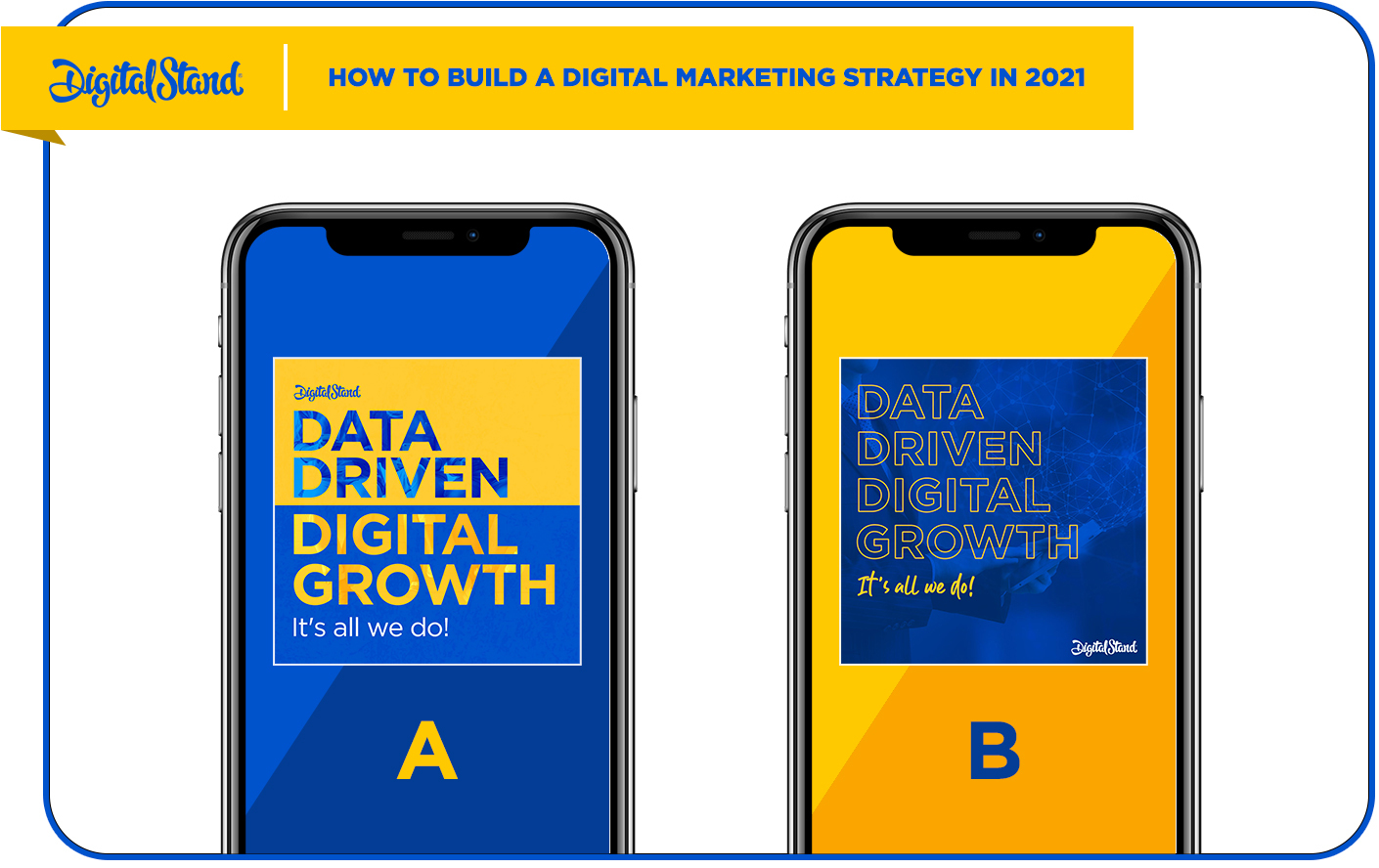
So, we have now done a digital audit and understand all the channels we will use as part of our digital strategy.
We've analysed our target audience, and we perceive that we understand their needs and how our service or product will solve this.
We want to create multivariant message testing to test our assumptions based on data against a real live audience.
Only through a series of testing can we determine the effectiveness of a message and the potential of our campaign.
Because depending on what the audience and market respond to will influence our social and digital channels.
It will impact the content that we write, the landing page headlines, the images we use, and the messaging we use to nurture these leads and drive sales.
This process never actually stops. Because as you find a winning campaign, you retire non-performing assets and replace them with alternatives.
This is where the agile part of a 2021 digital marketing strategy comes into place. By doing this, you are going to improve your campaigns and your overarching digital strategy continually.
To put this simply, if I offer you two apples, you will choose one. So I want to find the apple most commonly chosen and iterate from there.
The Buyers Journey
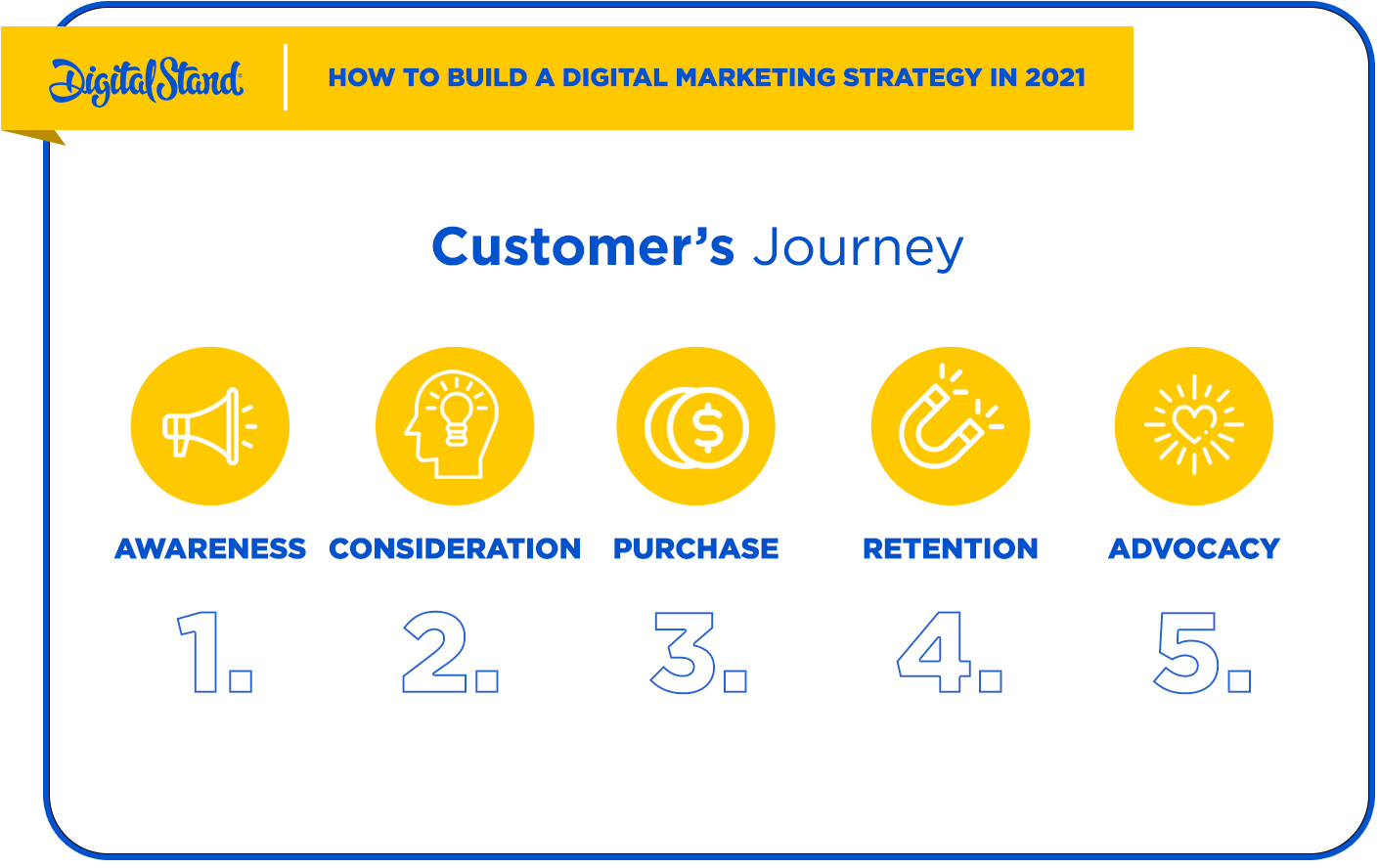
Did you know the typical conversion rate of a website is somewhere between 1 to 2%, and a good conversion rate is somewhere between 3 to 5%.
It might further interest you to know that a conversion rate can be as high as 25%.
Breaking down your buyers' journey into the stages of your digital strategy will increase your conversion rates.
Let me offer you the following simple example.
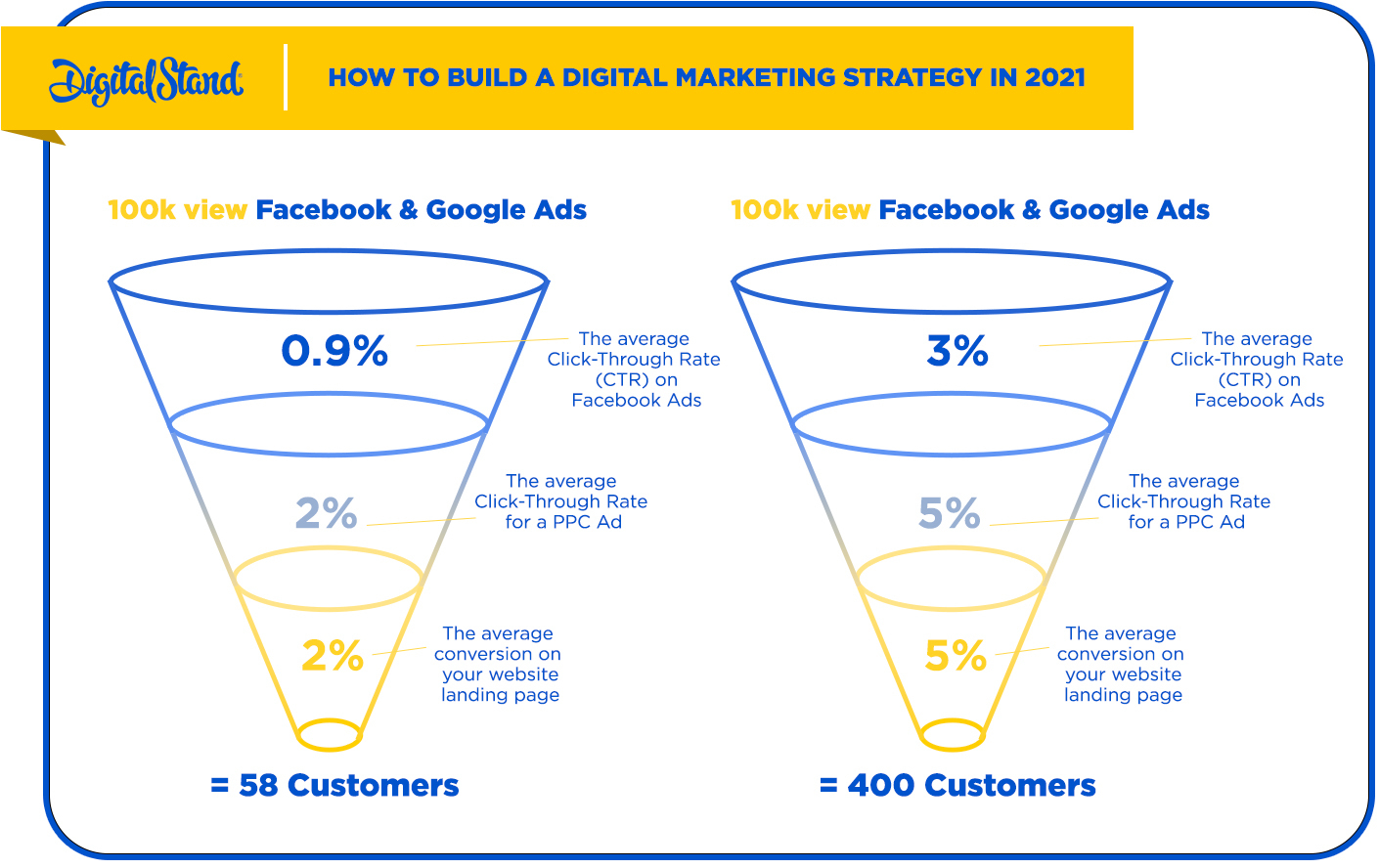
Only when we assess ourselves against industry benchmarks can we determine how effective our digital marketing strategy is.
Using industry averages as a baseline and implementing a strategy where our conversion rates are higher than this, we can be assured that we're growing our business faster than the rest of our competitive peers.
A Frictionless Path
If you're in the IT or software services space, you may be familiar with the term called user acceptance testing. Essentially, this means the users test the environment built to make sure it's effective and works.
It is no different when you build a digital marketing strategy; each component you put together needs to work seamlessly.
You want to make sure that you're removing all friction from the purchase or lead generation process. And the customer experience is what you want it to be.
Friction when it comes to a digital marketing strategy can include:
- Your website loading too slowly
- You don't have any reviews about your business and or products
- Your ads are not linking correctly
- Too many fields to complete for a download page or sign-up page
- No ability to chat online
- An item being out of stock
- No price information
- Too many steps to complete the purchase
- Hidden costs at checkout
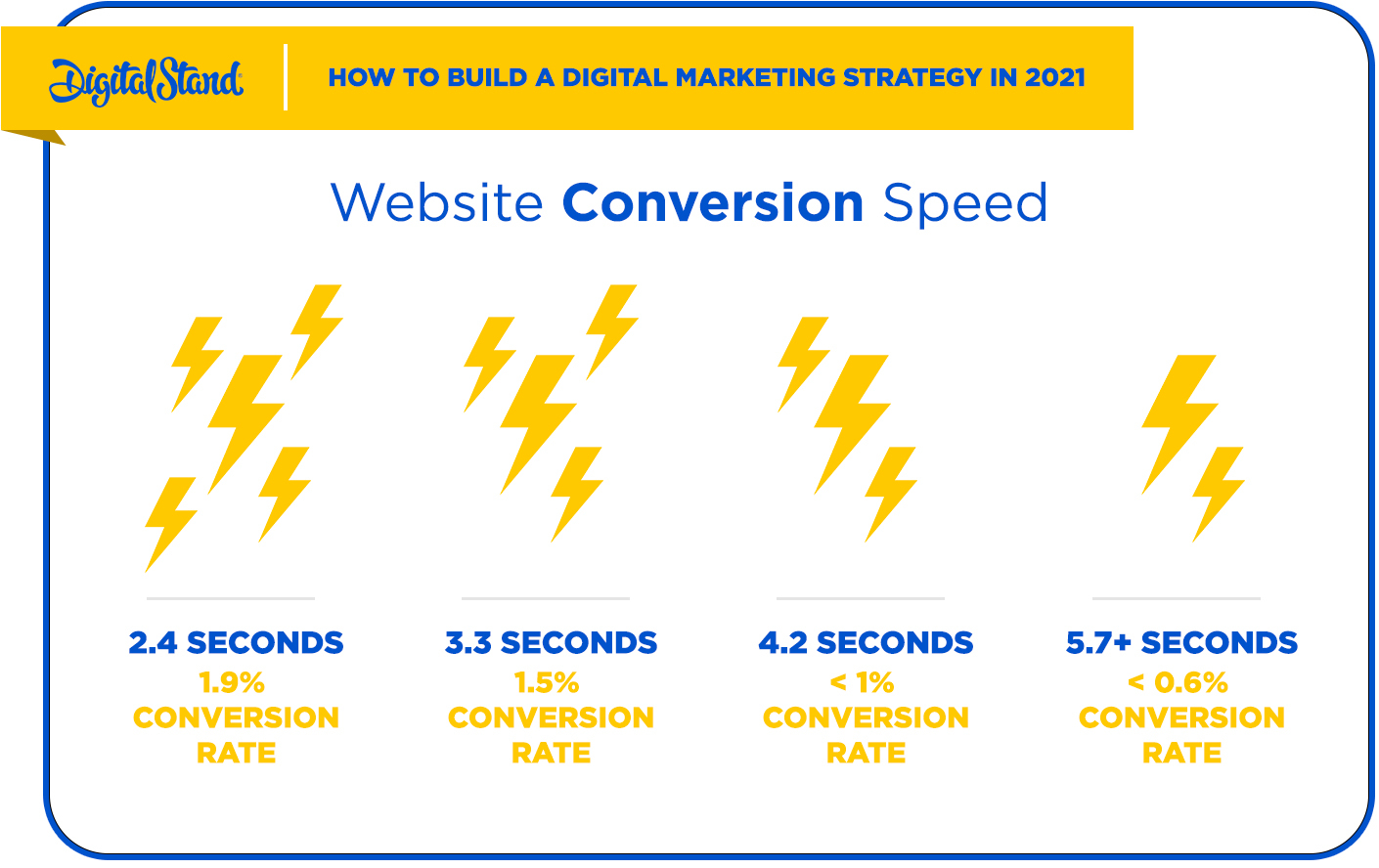
The best way to test this is to have objective users try your environment. For example, you could have your service department go through the full process.
Or there are external parties that can test your environment for a fee.
Certainly, worthwhile doing is also using tools like Lucky Orange or Hotjar so you can watch videos of the user experience.
There's probably never been a more critical time to be effective with online marketing. Your business goals are more reliant on digital than they have ever been.
Some of what I have discussed above seeks to address this area and ensure that you are effective.
Targeting the right audience with the right message and removing all friction from the process works in every industry.
Hi, since 2013 we have removed friction from our clients' environments and achieved above industry conversion rates.
Should you need any help in this area, you're welcome to contact us here for a no-obligation strategy conversation.
Alternatively, please feel free to download the whitepaper below and get in touch at the right time.

.jpeg?width=200&height=200&name=pexels-mikhail-nilov-6893349%20(1).jpeg)


.jpeg?width=318&height=135&name=pexels-cottonbro-studio-4065876%20(1).jpeg)





